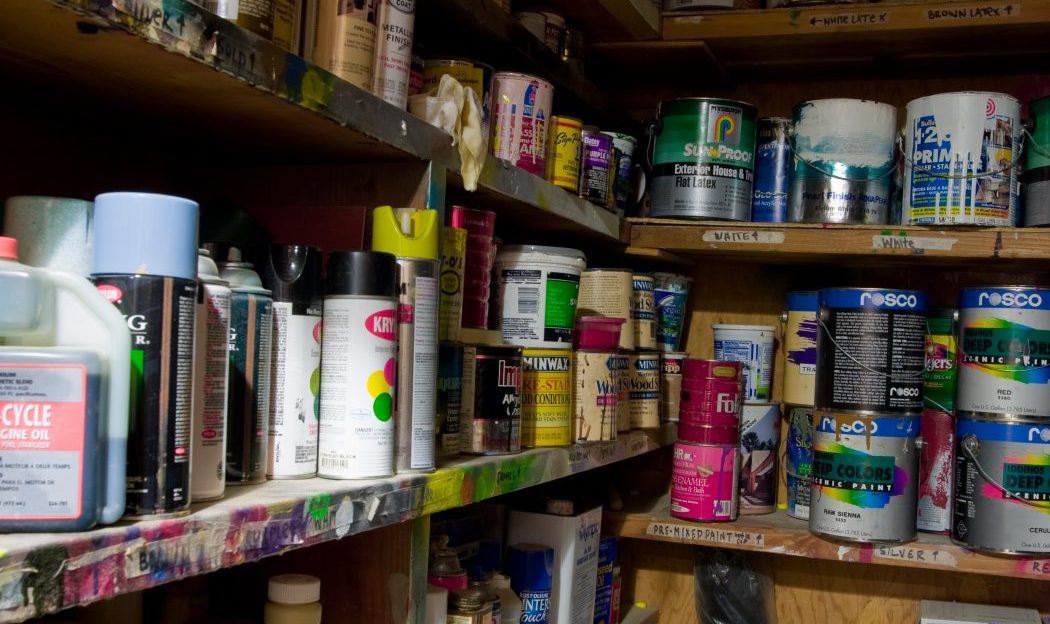 Storing paint products and other flammables properly is one of those things we know we’re supposed to do because they can cause a fire or even an explosion. But life is busy. We forget to do it.
Storing paint products and other flammables properly is one of those things we know we’re supposed to do because they can cause a fire or even an explosion. But life is busy. We forget to do it.
So, here’s a quick refresher on keeping your family and your home safe (and making sure that half-empty can of paint is still usable when you need it).
Paint
- When you’ve finished painting, wipe excess paint from the grooves in the top of the tin and use a rubber mallet to reseal it firmly (a regular hammer distorts the lid). If you don’t have a rubber mallet, put a piece of wood on the lid and hammer it closed.
- If the tin is halfway empty or more, transfer the remaining paint into quart tins (ask your paint store if you can buy a couple) or large jars.
- Store the paint in a cool, dark place like the basement, where it won’t freeze. Don’t put tins on the floor because dampness could cause rust and a leak.
- To dispose of latex paint in Ottawa: if the can is empty, it can go in your blue bin; if it’s not empty but has dried, put it in the garbage; if it’s still liquid, set it aside until the City of Ottawa starts its one-day summertime Household Hazardous Waste depots. Some retailers also accept liquid paint, but you should call ahead.
- Spray paint, lacquer thinner, and paint brush cleaner are all highly flammable. Don’t store these substances in spaces where there’s high heat or heat-producing units like furnaces. For disposal, take them to a one-day Household Hazardous Waste depot. Do not put these items in the garbage, where they could cause a fire or other hazards.
More storage and disposal tips for regular paint
Gasoline and kerosene
- Never store these in the house, where they may accidentally wind up close to a dangerous source of heat, sparks or other ignition source (gasoline vapours can be ignited by some household appliances and even static from clothing). If you must, keep them in the garage; better still, store them in a separate outdoor building like a garden shed. Wherever you put them, make sure there is no danger of sparks or an open flame and that children cannot access them.
- Gasoline, oil and other fuels should be transported and stored only in containers certified by agencies like the Canadian Standards Association or Underwriters’ Laboratories of Canada. Remember not to fill containers to the top: gasoline expands in warm temperature and that can cause a spill and, potentially, a fire or explosion. Transport gasoline only in the trunk, and leave the trunk propped open a little; if the trunk heats up, the gasoline will expand, releasing dangerous fumes that could enter the car or collect in the trunk.
- To dispose of gasoline, kerosene, oil and other fuels, take them to a one-day Household Hazardous Waste depot or one of the City of Ottawa’s Take It Back! members, which safely reuse, recycle or dispose of the material. Do not put it in the garbage, pour it down the sink or throw it on the ground.
Originally published June 5, 2019.
Got a maintenance task you’re not sure how to do?
Drop us a line at info@allthingshome.ca or message us through Facebook.
